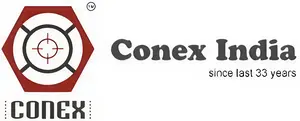Inspection Tees Elbows with Cover and Screw
Inspection Tees Elbows with Cover and Screw
BS Aluminum Electrical Circular Terminal Junction Box – Elbow Way
| Technical Datasheet | |
|---|---|
| Material | Malleable Iron, Aluminum |
| Standard Compliance | BS4568/BS31 |
| Available Sizes | 20mm, 25mm, 3/4”, 1” |
| Specifications | |
|---|---|
| Internal Diameter | 60.3mm |
| Depth | 25.4mm |
| Thread Tapping | M4 for metric sizes and 2BA for imperial sizes |
| Earthing Screw Hole | 50.3mm with tapped base |
Key Features and Advantages:
- Economical Aluminum Material: Lightweight and cost-effective.
- BS Thread Compatibility: Available with BS threading for seamless installation.
- Standard Size Options: Supplied in 3/4” and 1” sizes for versatile applications.
- Compact Dimensions:
- 3/4″ box height: 25mm
- 1″ box height: 30mm
- Enhanced Design: Superior to malleable circular boxes in durability and functionality.
- Pulling Holes: Switch boxes include a single pulling hole for easy wiring access.
- Additional Sizes Available: 20mm and 25mm.
“Inspection Tees” and “Elbows with Cover and Screw” are terms typically associated with electrical conduit fittings. Let’s briefly explain each one:
- Inspection Tees: An inspection tee is a type of conduit fitting used to provide a convenient access point in a conduit run for inspection, maintenance, or pulling wires. It has a T-shaped design with a removable cover on the top or side, allowing easy entry to the conduit. These tees are especially useful in situations where it might be necessary to inspect or troubleshoot the wiring without dismantling the entire conduit system.
- Elbows with Cover and Screw: Elbows are conduit fittings that allow directional changes in the conduit run, typically 90 degrees or 45 degrees. “Elbows with Cover and Screw” usually refers to a specific type of elbow fitting that comes with a cover plate and a screw to secure the cover in place. The cover plate is used to protect the internal wiring and connections within the elbow. It also prevents dust, debris, and moisture from entering the conduit at the elbow joint.
Both these types of fittings are commonly used in electrical installations to ensure proper wire routing, protection, and easy access for maintenance and inspection purposes.





